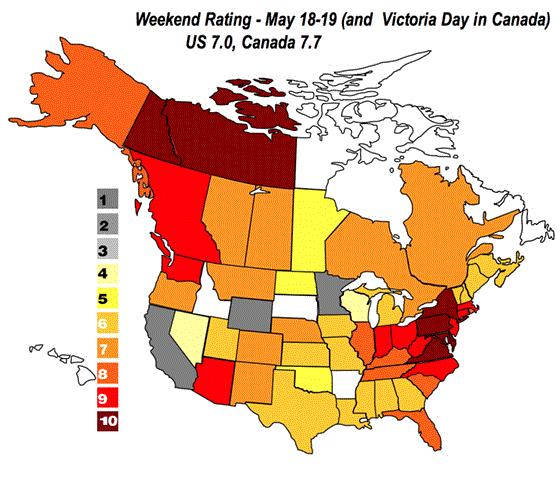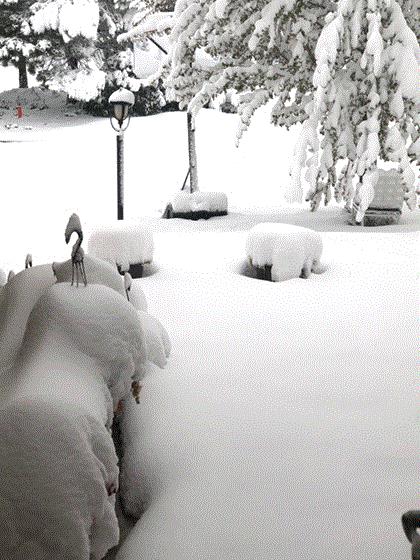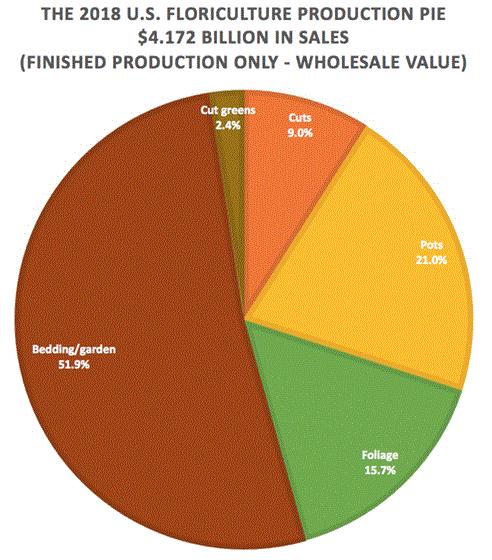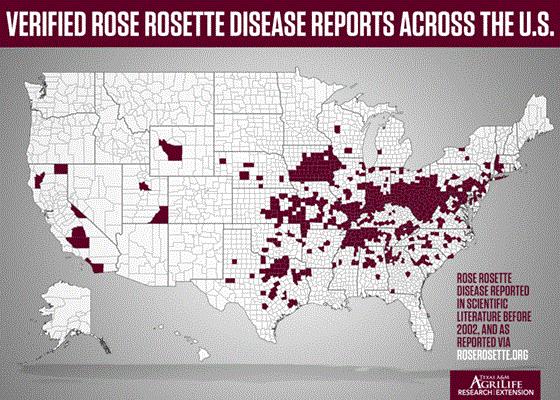How was Canada’s Victoria Day three-day weekend (and our May 18-19)?
Not as good as last year, that’s for sure. My friends in the Great White North returned scores that totaled just 7.7 out of 10. That’s based on 36 scores from seven of the 10 provinces and two of the three territories (I finally got a report from the Yukon and the Northwest Territories!).
Compare that to 2018, which scored a stupendous 9.4. In fact, Victoria Day Weekend 2016, 2015 and 2014 all scored in the 8s—we have to go back to 2013 (7.6) and 2011 (7.5) to find scores less than 8 for this three-day holiday.
If it had been up to British Columbia and the territories, the weekend would have scored well above 9. BC scored 9.2 despite rain on the Monday holiday; and my reporter for the territories, Stan Vander Waal of Rainbow Greenhouses, who ships to the chains up there, scored the Yukon and Northwest Territory a perfect 10, saying sales were nearly double last year.
Meanwhile, Ontario only managed 7.4, thanks to a mixed bag of scores from 3 to 10. Apparently, it depended upon where exactly you were in the province for a good weekend. Some folks called it cool and sunny, others cool and rainy. Joanna Steckles (who scored Ontario 5), joked that conditions were either “cold, cloudy and wet; or wet, cloudy and cold.” But she added, optimistically, “On the flip side, it amazes me how many people are buying considering how miserable the weather is. Don’t think we’ve had such a late spring since we’ve been in this business.”
In the other provinces, Quebec scored 6.5, the Atlantic provinces were 6.3, Alberta was 7.4, Saskatchewan was 7 and Manitoba scored 5.3.
Here’s the map:

Brian Pike of Halifax Seed in New Brunswick scored the weekend an almost-average 7.5, writing, “Weekend started off great, even with less-than-perfect weather. Lots of customer traffic and [they were] eager to get planting. Monday (the holiday) was poor, with rain and cool temperatures. Summing up: Out of the gate strong and ending on a whimper. Oh well, there’s still time on the clock.”
David Keeler of Jolly Farmer, also in New Brunswick, scored the weekend 5 for the Atlantic Provinces (and northern New England), writing, “Prolonged rain and cold are causing some customers to get backed up with product, although all the signs are there that customer demand will be strong if we can only get some halfway-decent weather. Our growers say we’re experiencing March light levels and April temperatures here in New Brunswick.”
Not everybody had just a so-so holiday weekend. Will Heeman “Chief Daymaker” at Heeman’s Garden Centre & Strawberry Farm in London, Ontario, scored it a 9.5 and thought about giving it a 10.
“We blew down records, like records I didn’t know could be broken were trampled. I’d have given it a 10 but the weather was so wild—hot and windy one day, cold and damp the next. Won’t complain: attendance was up and the average purchase was way up.”
Same goes for Rosie Lombaert at Belgian Nursery in Ontario. She scored it a 10, too:
“Extremely busy weekend … record-breaking Saturday. The long weekend was challenging, with extreme heat on Sunday and cold and wind on Monday. Customers were in a good mood, finally knowing planting can begin soon.”

Meanwhile, down in the U.S. …
We pretty much stank for the third weekend in May, with a lackluster 7.0. That’s based on 120 scores from 46 states.
Then again, the weekend after Mother’s Day has averaged 7.3 since 2011, with a high of 8.1 (2014) and a low of 6.6 (2011 and 2017). So it’s generally not all that hot. But since our Mother’s Day was disappointing (7.6), I think we hoped folks would turn out.
In one case, they did. The standout region was the East, at an incredible 9.7. It was such a good score, I had to look up which six states make up the region. They are Delaware (10), Maryland (10), New Jersey (9.4), New York (9.5), Pennsylvania (9.7) and Virginia (9.5).
On the other side of the coin was the Mountain region, which scored just 5.2. The Plains were 5.9, the West 6.2 and the Midwest 6.3.
The Northwest, which has been utterly fantastic all spring long, finally took a break and scored just 7.6. New England was just behind at 7.4. The South, at 7.0, is heating up and slowing down.
Your comments
Like the weather and spring in general, your comments reflect the rollercoaster season we’ve been having:
Pennsylvania (10): “We finally had a nice, dry weekend and people were out buying large quantities of bedding plants! Our retail division also enjoyed good foliage plant sales, as we have for most weekends of the year.”—Aimee Rohrbach, Musselman Greenhouses
Kansas (2): “One of the coldest and wettest Mays on record for the area. April was great, but May has been dismal. Some customers have been telling me that they are putting off coming in until it warms up and dries out.”—Andrew Fox, Arnolds Greenhouse
Ohio (10): Finally, nice weather on a Saturday—and sales reflected it, although its’ still too wet for most people to be in their gardens.”—Kim Grant, Strait Gate Greenhouses
Colorado (2 for the season so far): “Not sure who is sending you high scores for Colorado, but it has been the worst May in 10 years for us. We had freezing temps in the evenings most of last week and last night we were hit with a foot—yes, a FOOT—of snow. See the attached photo I took this morning right outside my front door. Most of my team couldn’t make it into work today because of the terrible road conditions! Colorado season has been a dismal one so far. I would rate it as a 2 or lower for the year.”—Aaron Van Wingerden, Dutch Heritage Gardens

Aaron's front yard on May 21. I suspect he's going to have to replace that hanging basket.
Michigan (9): Weather was pretty decent Friday and Saturday. Rain Sunday, but temperatures were warmer, so it was a ‘warm rain,’ which didn’t bother the customers that much. Thankful, we didn’t get the strong winds that were predicted.”—Paul Begick, Begick Nursery
North Central Missouri (4): “Wash, rinse, repeat. Two inches of rain over the two days, with forecasts for the week ahead promising more, plus flooding.”—Beth Weidner, Weeds Greenhouse & Gardens
Long Island, New York (10): “Finally, both days were very solid in spite of a half-hour downpour on Sunday at 10 a.m.”—Sig Feile, Atlantic Nursery
Minnesota (3): “Rain and 40F is not a success strategy for selling spring plants.”—Ed Lynde, Lynde Greenhouse
Northern Nevada (4): “Had to have a flash sale in order to just equal year-ago weekend revenue, as the weather gods were announcing three weekends of colder, rainy (even some snow) weather … and two-plus weeks still to go. Yuck!”—Bruce Gescheider, Moana Nursery
Northern California (1): Normally I don’t like to score a bad weekend because you have to relive it to score it! Truth be told, winter was back in Northern California this last weekend and our customers just decided to do something else or stay home. Our stores overall are still stuffed and reorders are soft at best—yuck!”—Dave Vincent
Two “yucks” in a row—that’s how bad it was!
My favorite comment was from my pessimistic (he says realist) friend Bill Swanekamp of Kube-Pak in New Jersey, one of the high-scoring Eastern states. He sent in a very nice score of 9 accompanied by this brief note:
“Sorry for the late response, still trying to make some money.”

The new Floriculture Pie, from Dr. Marvin Miller
Data! That’s what our industry needs more of, which is why it’s wonderful news that, after a two-year hiatus (due to lack of funding, they say), the USDA has once again published a fresh annual Floriculture Crops Summary. So we have once again asked Ball’s Market Research Manager, Marvin Miller, to crunch the numbers. Here’s his report:
With the new data, there are some changes. Instead of 15 states, we will now have 17 states going forward, and we have greater geographical diversity. Gone are the states of Hawaii, Maryland and South Carolina. New states include Alaska, Colorado, Connecticut, Virginia and Wisconsin.
There are also some crop changes. In cut flowers, we will no longer have data for alstroemeria, standard carnations, delphinium, larkspur, and lisianthus. But dahlia, peony and sunflower will join pompon chrysanthemums, gerbera daisy, gladioli, iris, lilies, orchids, roses, snapdragons, tulips and “other cut flowers.”
For potted flowering plants, we have lost African violets and florist azaleas, but we’ve retained florist chrysanthemums, Easter lilies, potted orchids, poinsettias, potted florist roses, potted spring flowering bulbs and “other potted flowering plants.”
Foliage is unchanged and we will continue to have data on potted foliage and foliage hanging baskets.
In the bedding/garden plant arena, the big change is in perennials, as daylilies, hardy/garden ferns and peonies join hardy/garden mums, hostas and “other herbaceous perennials.”
For annuals, we’ve lost data for seed geraniums; but data for begonias, vegetative geraniums, impatiens (I. walleriana), New Guinea impatiens, marigolds, pansy/viola, petunias and “other flowering bedding/garden plants” will continue to be provided for flats, pots, and hanging baskets individually.
Vegetable data will also continue to be provided for flats and pots.
Cut cultivated greens data will still show leatherleaf ferns and “other cut cultivated greens.”
Finally, propagative materials data will be provided as in the past for cut flowers, potted flowering plants, foliage plants, annuals, perennials and cut greens.

With all of these changes to states and crops and the two-year lapse, it will take some detailed explanation to make true comparisons. But, ignoring the detail, the “industry,” as defined by the totals, has indeed grown between 2015 and 2018 in most segments. Overall growth for the period shows an increase of about 5.8%. If one considers only growers with at least $100,000 in wholesale sales, industry growth was recorded at 8.8% higher in 2018 than in 2015.
The most disappointing news was that foliage sales in 2018 were 8.5% lower than the 2015 level, largely the result of the devastation wreaked by Hurricane Irma in 2017 and Hurricane Michael in 2018.
Cut flower sales in 2018’s report were 0.2% higher than in 2015, and potted flowering plant sales increased 8.3%.
In the bedding/garden plant category, which was up 16.5% overall, sales of annuals increased 13.3%, while perennial sales shot up 23.8%. Sales of cut cultivated greens increased 26.8%. And propagative materials sales increased 9.5% over the three-year period.
Examining the 2018 data, it appears the industry is even more focused on the bedding/garden plant category. The data show the bedding/garden plant segment now accounts for 51.9% of the finished floricultural sales, up from 48.4% of the pie in 2015.
Potted flowering plants held pretty steady, moving from 21.1% to 21.0% over the three years.
Foliage plants showed declines in grower sales, as this segment dropped from 18.6% of finished sales to only 15.7% of sales.
Cut flowers now account for 9.0% of the pie, down from 9.8% of the finished floricultural product sales of growers in 2015.
And cut greens now account for 2.4% of sales, up from 2.1% in 2015.

TAMU releases rose rosette map
Among other updates to their effort to find a solution to rose rosette disease (which has cost the rose industry an estimated $40 to $50 million), Texas A&M AgriLife researchers have published a map showing the location of more than 2,100 incidents of rose rosette, which will help understand the scope and spread of the disease. This is just a small part of a comprehensive national effort among 30 industry and academic groups that TAMU has been leading since 2014, when they received a $4.6 million grant.

Part of that grant money went to establish the website roserosette.org, which helps the researchers track the distribution of the disease and serves as a clearing house for information.
The researchers are also:
- developing genomic tools to identify the disease more accurately and quickly;
- studying the virus to see how it interacts with the plant;
- seeking methods for controlling the mite, Phyllocoptes fructiphilus, thought to be the sole vector of the virus;
- looking at molecular markers in roses that exhibit resistance to the virus, to help breed better varieties. They now have about 3,000 markers identified, compared with 150 when the work started.
Future work will go into screening commercial varieties for resistance, implement spectral imaging in the field to detect rose rosette before symptoms are visible, and expand the reporting of rose rosette incidences on the national website.

HRI scholarships available—deadline Sept. 13!
With a four-year college degree costing an average of $77 million these days (give or take), it behooves you and the student in your life to consider applying for one of the seven Horticultural Research Institute scholarships available for the 2019-2020 school year. There’s almost $20,000 available to students who are seeking a life-long career in horticulture. The scholarships include:
- The Timothy S. and Palmer W. Bigelow, Jr.
- The Usrey Family Scholarship
- The Bryan A. Champion Memorial Scholarship
- The Susie & Bruce Usrey Scholarship
- The Spring Meadow Scholarship
- The “Muggets” Scholarship
- The Carville M. Akehurst Memorial Scholarship
For more information, click HERE.
Meet AmericanHort’s new officers and Board members
AmericanHort just announced the election of three new members to its Board of Directors, plus the installation of new officers. The new Board members (each of whom will serve a three-year term) are:
- Gerry Docksteader, VP of Operations for Master Nursery Garden Centers, Vacaville, California
- Joe Hobson, President and COO of Midwest Trading Horticultural Supplies, Inc., a “Peter Orum Company,” Virgil, Illinois
- Amy Morris, head grower at N.G. Heimos Greenhouses, Millstadt, Illinois (and a GrowerTalks columnist!)
The new Chairman of the Board is Susie Raker-Zimmerman, vice president at Raker-Roberta’s Young Plants in Litchfield, Michigan. She has been on the AmericanHort Board of Directors since 2015. Susie was previously on the board of the Ohio Florist Association (OFA) and a board member of the Michigan Greenhouse Council.
The new Vice Chairman of the Board is Tom Hughes, President and Co-Owner of Hughes Nursery & Landscaping (HNL) in Cedar Rapids, Iowa, a family business founded in 1908.
The official welcome will take place at Cultivate’19, July 13-16, in Columbus, Ohio.
“It’s important that all segments of our industry are represented on the board and we are excited to welcome this diverse group of new members,” said Ken Fisher, president & CEO of AmericanHort. “We also sincerely appreciate the dedication and commitment of our officers and all board members for their invaluable leadership.”

Finally ...

My friend Linda Adams, COO of FNGLA down in Florida, gets a weekly email from TED (the talks people). In the most recent edition, they highlighted a TEDx talk by engineer Mike Robinson of BC, Canada, about the positive, tangible benefits of office plants. In fact, he calculates (remember, he’s an engineer) that productivity increased 20% to 40% in his office since giving each of his employees a plant.
But there’s a bit of a catch: Rather than just hand them a plant, he and his wife, Suzanne (the plants were actually her idea) put 20 plants on a table, then asked each employee to pick a plant but do so from the perspective of the plant. As in, “If I was a plant, which employee would I want to have as my new friend?”
Employees then got a small sign on which they wrote “My friend is _____” putting in their own name and then putting the plant in their personal workspace.
Do you see the psychological genius behind that twist? The bond it creates between the employee and his or her new plant? Now there’s a sense of responsibility, of caring, of ... well, friendship. In fact, supposedly, five years later, not a single plant from that first group has died.
As for the productivity increase, Mike did a deep dive into scholarly research on the topic of workplace productivity and found heaps of evidence that supported what he found in practice—that plants in the workplace: boost creativity, make employees happier, make them faster, make them more efficient, make them less angry, make them less fatigued, help them enjoy time at work better and reduce absenteeism.
Is he a believer? You bet—he’s out giving TED talks on the topic, isn’t he? Read the whole piece HERE, and link to the TEDx video HERE.




See you next time,

Chris Beytes
Editor
GrowerTalks and Green Profit
This e-mail received by 23,686 loyal readers!
Thanks to my loyal sponsors, who help me reach the 23,686 readers of Acres Online in 66 countries. Want to be one of them (a sponsor, that is)? Give Paul Black a shout and he'll hook you up.